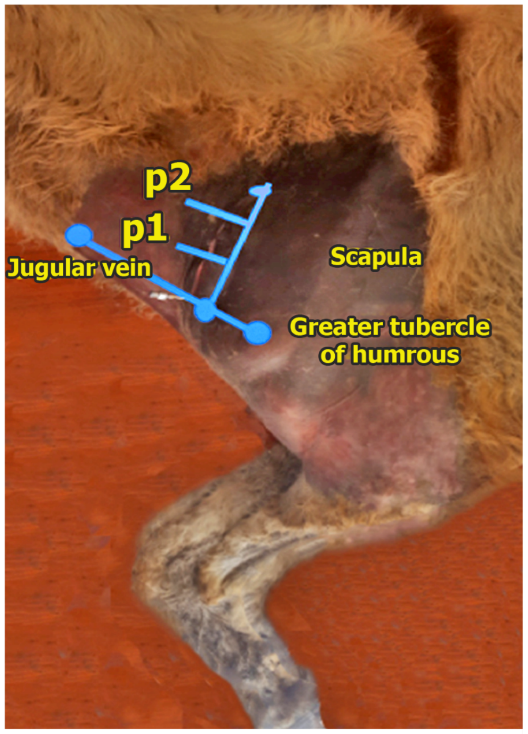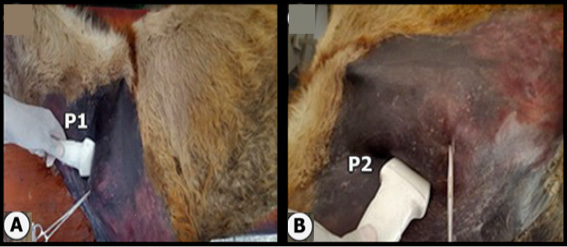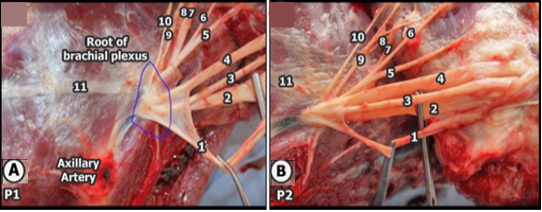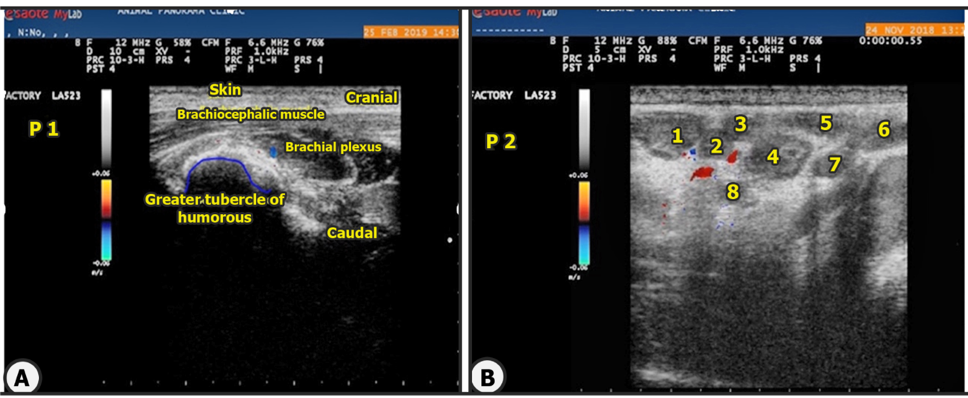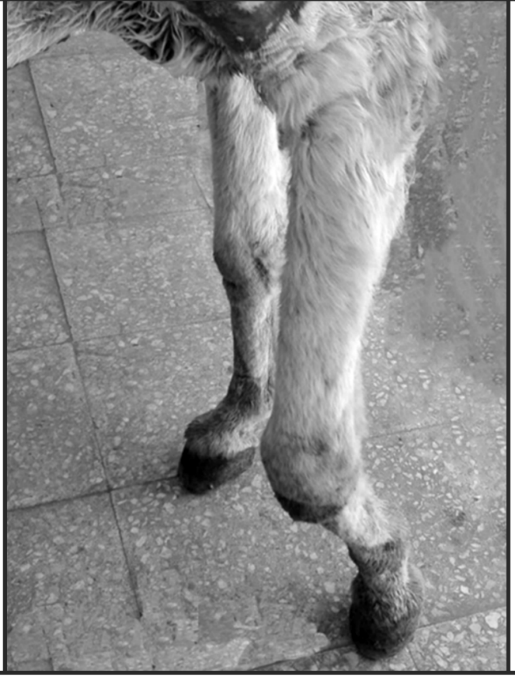New Approach for Ultrasound-Guided Regional Analgesia of Brachial Plexus in Egyptian Donkeys
Adel Sobhy1, Ahmed El-khamary1, Ahmed M. Rashwan2,3, Ashraf Shamaa4, Mostafa Kassem5, Mohamed M. A. Abumandour6*, Ahmed El-Mansi7, 8 and Ahmed G. Nomir2
1Department of Surgery, Faculty of Veterinary Medicine, Damanhour University, Damanhour 22511, Egypt.
2Department of Anatomy and Embryology, Faculty of Veterinary Medicine, Damanhour University 2511, Egypt.
3Department of Life Science Frontiers, Center for iPS Cell Research and Application, Kyoto University, Kyoto, Japan.
4Department of Surgery, Faculty of Veterinary Medicine, Cairo University, P.O. Box 12613, Giza, Egypt.
5Department of Surgery, Faculty of Veterinary Medicine, Alexandria University, Alexandria, Egypt.
6Department of Anatomy and Embryology, Faculty of Veterinary Medicine, Alexandria University, Alexandria, Egypt.
7Biology Department, College of Science, King Khalid University, Abha, Saudi Arabia
8Zoology Department, Faculty of Science, Mansoura University, Mansoura, Egypt
Fig. 1.
Gross anatomical image to determine the site of brachial plexus and anatomical landmarks. First-line from the greater tuberosity of the humerus to the jugular vein, the second line is perpendicular to the first line parallel to the first rib and scapula which determines two sites P1 and P2.
Fig. 2.
Gross anatomical image in which the A determines the position of probe at p1 of brachial plexus while the B determines the position of probe at p2 of brachial plexus.
Fig. 3.
Gross Anatomical image of the brachial plexus and its branches. A shows determines the anatomical dissection of the root of the brachial plexus at site P1 with the appearance of an axillary artery, while B shows determines the anatomical dissection of the brachial plexus after bifurcation from the origin at site P2.
Abbreviations: 1, musculocutaneous nerve; 2, median nerve; 3, the ulnar nerve; 4, radial nerve; 5, axillary nerve; 6, lateral thoracic nerve; 7, suprascapular nerve; 8, subscapular nerve; 9, caudal pectoral nerve; 10, dorsal thoracic nerve; and long 11, thoracic nerve.
Fig. 4.
Gross anatomical (A) and ultrasound view to determine the US-guided cadaver study at sites p1 (B) and p2 (C).
Fig. 5.
Ultrasonogram of the brachial plexus region in longitudinal transducer in life beneath the muscle demonstrating the brachial blood vessels.
Fig. 6.
Ultrasonogram of the brachial plexus region in longitudinal transducer in life beneath the muscle demonstrating the injected brachial plexus at site p1 (A) and site p2 (B).
Abbreviation: 1, musculocutaneous nerve; 2, median nerve; 3, the ulnar nerve; 4, redial nerve; 5, axillary nerve; 6, lateral thoracic nerve; 7, suprascapular nerve and 8, subscapular nerve.
Fig. 7.
The donkey showed scapula-humeral angle and was unable to bear weight after the injected forelimb with lidocaine 2%.







